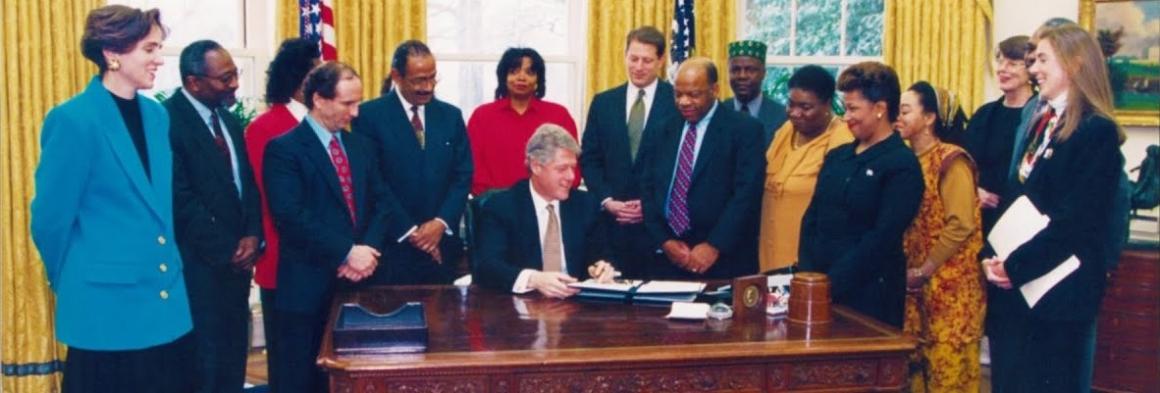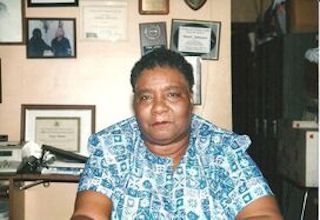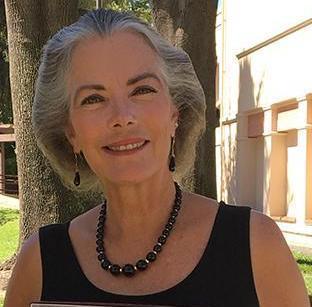
Remembering "The Mother of Environmental Justice"
Nancy C. Unger
At one point during her career at Santa Clara University, Professor Nancy C. Unger juggled teaching and publishing in three different programs: history, women’s and gender studies, and environmental studies. While the balancing act was difficult, the insight she gained was valuable. Unger recognized an important theme running through the three topics and in 2012 published, “Beyond Nature’s Housekeepers: American Women in Environmental History” (Oxford University Press).
“I was seeing all these intersections that nobody else was seeing, that nobody else was talking about,” Unger recalls. “People weren’t looking at the way men and women responded differently to the environment. They were missing this whole gendered piece.”
From the early Native American and colonial period up to the present time, Unger’s book explored how women have played a unique role in the shaping of the American environment. Among the notable figures Unger discusses in her 336-page book is Hazel M. Johnson, a Black woman whose activism in a low-income Chicago community not only helped to create a federal law, but earned her the moniker of “The Mother of Environmental Justice.”
In celebration of Women’s History Month, we asked Unger to recount Johnson’s story.
She carries the esteemed nickname of “The Mother of Environmental Justice,” but so many of us haven’t heard the name Hazel M. Johnson before. Who was she?
Johnson lived in Altgeld Gardens, a low-income housing community opened by the Chicago Housing Authority in 1945 for Black WWII vets—it was still the era of Jim Crow segregation. By 1979, the community was in serious decline and Johnson, who was 44 at the time, founded the People for Community Recovery to advocate for repairs to the row houses. Specifically, she was worried about homes with leaky ceilings. She confronted the housing authority for ignoring requests to repair roofs and plumbing and about a water supply that, Johnson said, was “coming from wells so contaminated you could see the film of chemicals floating on top.” At the same time, she noted the high number of cancer deaths and other unexplained health problems among her neighbors. The deaths of four little girls from cancer in the early 1980s—she said their bodies were so tiny they could fit into shoe boxes—galvanized Johnson, who was very much motivated by her Catholic faith. I think that’s what spurred her activism.
Once she identified the problem, what did she do?

Hazel M. Johnson/Courtesy of People for Community Recovery
Johnson wasn’t a scientist, she wasn’t an environmental specialist. She could see what was going on in her neighborhood and she decided to take action. She sends out these questionnaires to all of her neighbors to really try to understand: what are the health problems of the community, and how many of my neighbors have asthma or had childhood cancer. She doesn’t just say, “Well, it kind of feels like there’s a problem here.” She documents it, and People for Community Recovery becomes the first public housing environmental justice organization in the country. It demanded a comprehensive health study.
What did the group discover?
They learned that the housing had been built on a sewage farm created by the Pullman Palace Car Company decades before. The land had also been used as an illegal dumping ground for highly toxic Polychlorinated biphenyls (PCBs) by the Chicago Housing Authority that had developed the post-war 190-acre community. She called the area a “toxic doughnut” after she found out Altgeld Gardens was surrounded by at least 50 landfills and more than 250 underground leaking storage tanks. Health studies showed half of the pregnancies in the community had resulted in miscarriages, stillbirths, premature births, or birth defects. More than a quarter of the population suffered from asthma (including her seven children); others had skin rashes or kidney and liver problems. These weren’t random, isolated events; the People for Community Recovery recognized these problems affected the poor residents who were unknowingly living near toxic dumps.
What makes Johnson so important in your mind?
She brought together environmental justice and how it can intersect with racism. Before her, the idea was that nobody in these low-income communities would be aware enough, or educated enough, or organized enough to really fight back on this. But she decides that no one is looking out for the residents of her community, who are low-income people of color. So she is going to do that. She does a tremendous amount of work; she does a careful job of saying, “Look, you can’t brush me off. I’ve brought you so much evidence; these problems are disproportionately affecting people in my neighborhood with all kinds of serious illnesses, and I want to know why, and I want to know what you’re going to do about it.” As I understand it, she was pretty relentless.
What was the lasting impact of her activism?
Johnson and her group called for investigations of the polluting industries that were poisoning the community, and demanded a permanent ban on waste facilities in the area. They lobbied for and got safe sewer lines. Other victories mounted and her reputation grew. By 1991 she was dubbed “The Mother of the Environmental Justice Movement.” On Feb. 11, 1994, with Johnson standing nearby, President Bill Clinton signed Executive Order 12898 that “focuses federal attention on the environmental and human health conditions in minority communities and low-income communities with the goal of achieving environmental justice.” That’s a pretty huge accomplishment, to go from being a little community organizer to seeing this law signed.
And Johnson didn’t stop there: she went on to host environmental conferences and workshops and gave lectures on college campuses. The People for Community Recovery became a template for lots of other communities. She also saw this problem all around the world, and traveled to Brazil and South Africa, and brought awareness to it. The environmental justice movement is essentially seen as the remedy for environmental racism.
Johnson, to Clinton's right, in orange dress.

